An 80-year-old woman on hospice was brought to the ED by her daughter.
She had severe abdominal pain and vomiting.
Her primary medical issue was metastatic liver cancer, and she had been diagnosed with MRSA endocarditis of a prosthetic aortic valve.
The patient had recently started home hospice, elected for comfort care, and signed DNR paperwork.
The patient was started on a morphine drip and admitted to the floor.
She was taken to her inpatient room just before 3am.
The bag of morphine (100mg of morphine in 100mL of volume) was taken off the pump and hung on an IV pole while she was moved from the ED bed to her inpatient bed.
A clamp on the IV tubing accidentally came unclipped and the entire bag of morphine was bolused.
The nurse immediately recognized what had happened and paged the resident.
The resident and attending came to the bedside and evaluated the patient.
Her respiratory rate slowed to 8 breaths / minute.
Over the next hour, she was given several doses of naloxone.
The resident called the patient’s daughter and explained what happened.
After discussion of the situation, they agreed that giving her additional doses of naloxone would not be consistent with her goals of care.
The last dose of naloxone was given at 4:12am.
The patient did not become apneic, even several hours later when the naloxone wore off.
The patient survived until 12:00pm, when she passed away peacefully.
The daughter was upset about the accidental morphine overdose.
She contacted a law firm, and they obtained the medical records.
The attorney hired an IM / critical care physician to review the case.
A lawsuit was filed against both physicians (resident and attending), the floor nurse, and the hospital.
Join 12,000+ doctors on the email list.
Both free (1-2 cases/month) and paid (new case every week) options are available.
The plaintiff’s expert opinion is shown below.
The defense hired their own expert to review the case.
His opinion is summarized here:
In the state where this occurred, the defendants can request that their case be heard by a “medical tribunal” if they feel that there is no legitimate question of liability.
The tribunal consists of a physician, an attorney, and a judge.
After reviewing the case, this tribunal authorized the lawsuit to proceed against all parties.
The plaintiffs voluntarily withdrew the case against the physicians.
The nurse and hospital settled the lawsuit for just under $500,000.
Want to read more unbelievable medical malpractice cases that you won’t find anywhere else?
Want to see the real-life expert witness opinions from cases that were poorly covered in the lay media?
Subscribe now.
MedMalReviewer Analysis:
The primary allegation against the physicians is that they did not provide proper informed consent to her daughter. In particular, she claims that she was not told that the patient was alert after the naloxone doses. The plaintiff seem to imply that the patient should have continued to receive multiple doses of naloxone to make sure that she remained alert, while also treating her pain. I don’t find this argument to be convincing. It goes against the spirit of comfort care and what the patient herself wanted. She had a dignified and pain-free death, and frankly it’s ridiculous that these physicians were sued for providing good care.
The opinion offered by the plaintiff’s expert is noteworthy for the false statements and ridiculous claims he makes. He alleges that the overdose caused pulmonary edema, for which there is absolutely no evidence. He claims that a morphine overdose causes “distressing physiologic effects” and a “sensation of breathlessness”. To state it simply, these claims are absolutely false. This physician is either so poorly educated that he doesn’t understand the basics of how opioids function, or he is simply lying to please the plaintiff’s attorney and collect a large paycheck (either option is extremely concerning given his senior role at a large teaching hospital). Respiratory depression caused by opioids would not be expected to cause distress, and there’s no evidence to suggest that the patient was anything but comfortable.
A medical error like this is certainly below the standard of care (on the part of the nurse, not the physicians). However, it does not appear that there were any real harm from the overdose. She died long after the effect of the morphine and naloxone had passed. There is no reality-based argument that the morphine caused her death. The defense expert did an excellent job of describing the duration of effect of morphine and the simple fact that her death occurred long after it had worn off.
I’m really not sure why the “medical tribunal” exists. They have no business calling themselves “medical” as there is only one physician on the tribunal, and the other 2 participants have no medical training. One would presume that the purpose of this tribunal is to filter out baseless lawsuits like this, and it’s clearly failing in that regard.
This case has unfortunate repercussions for how we communicate with patients/families about medical errors. The physicians were open and honest about the error, and their honesty was repaid with an inappropriate lawsuit. They could have easily hidden the mistake (as was more frequently done in prior generations) and the patient’s outcome would have been unchanged. Despite the dishonest behavior we sometimes see from the plaintiff’s bar, I urge you to continue practicing medicine with honor and integrity.
Looking for a good EM job? Check out this recent post on Attending Jobs:

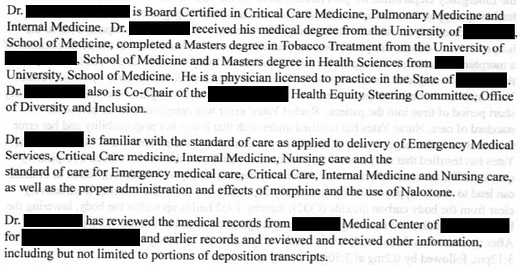




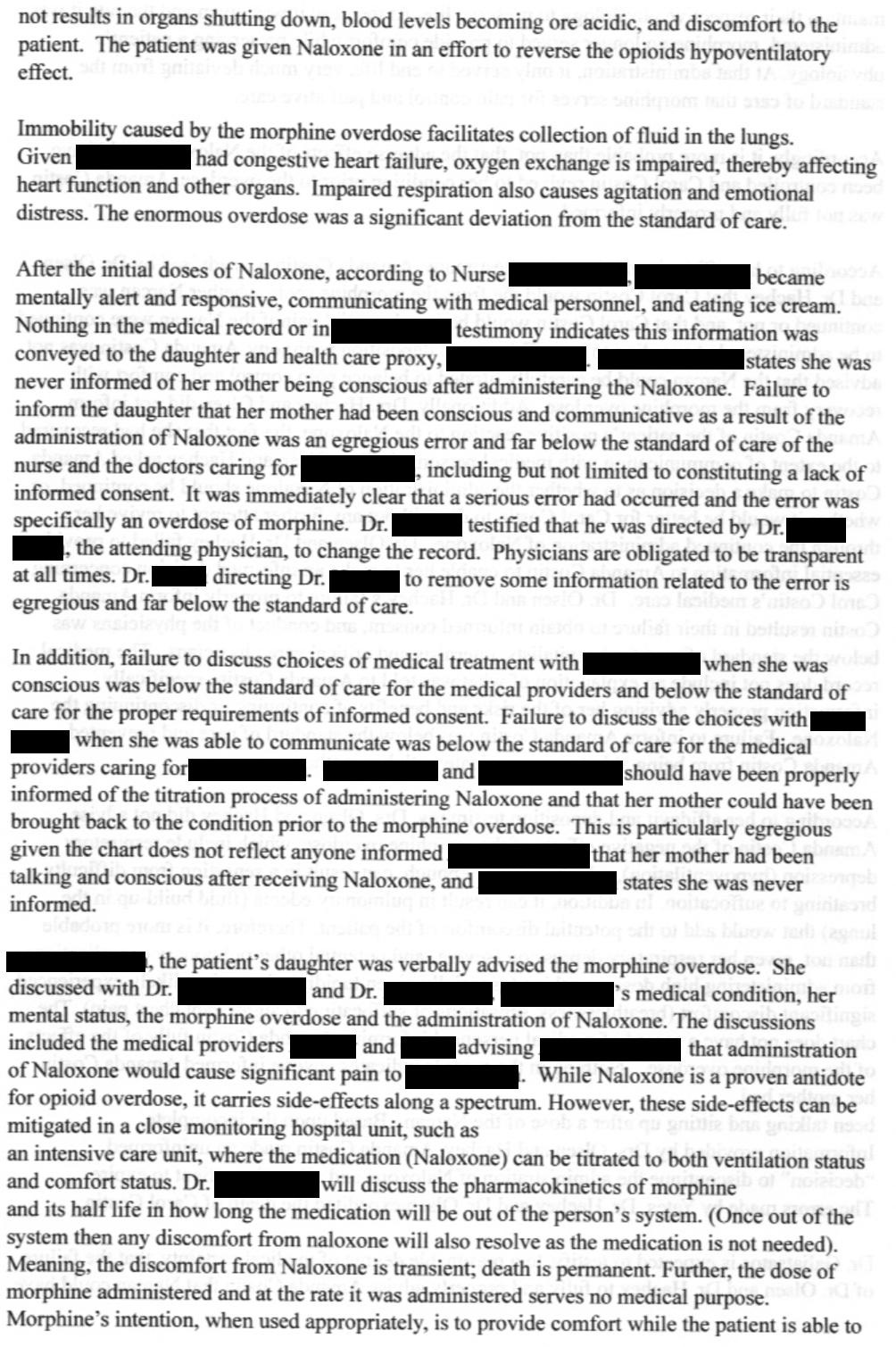

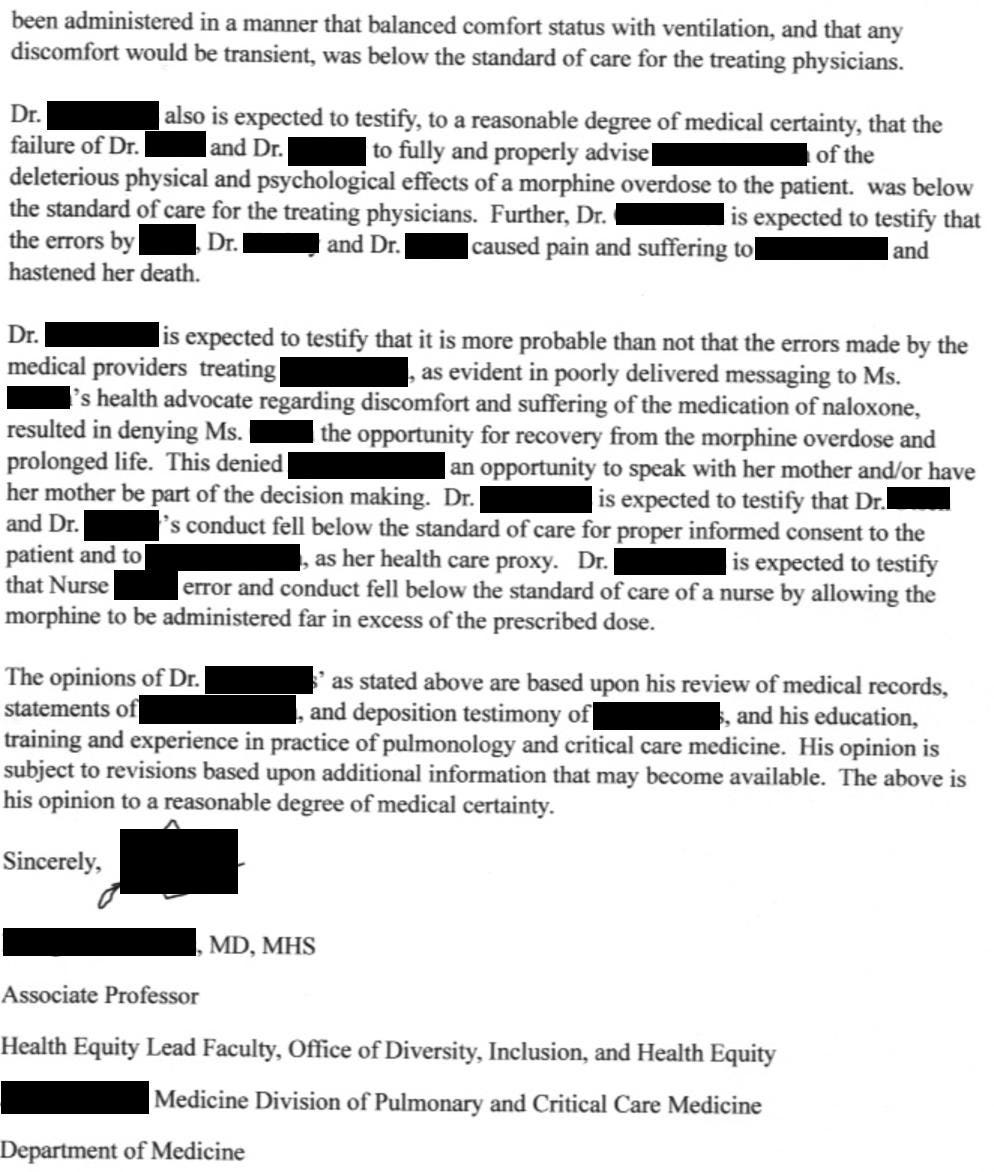

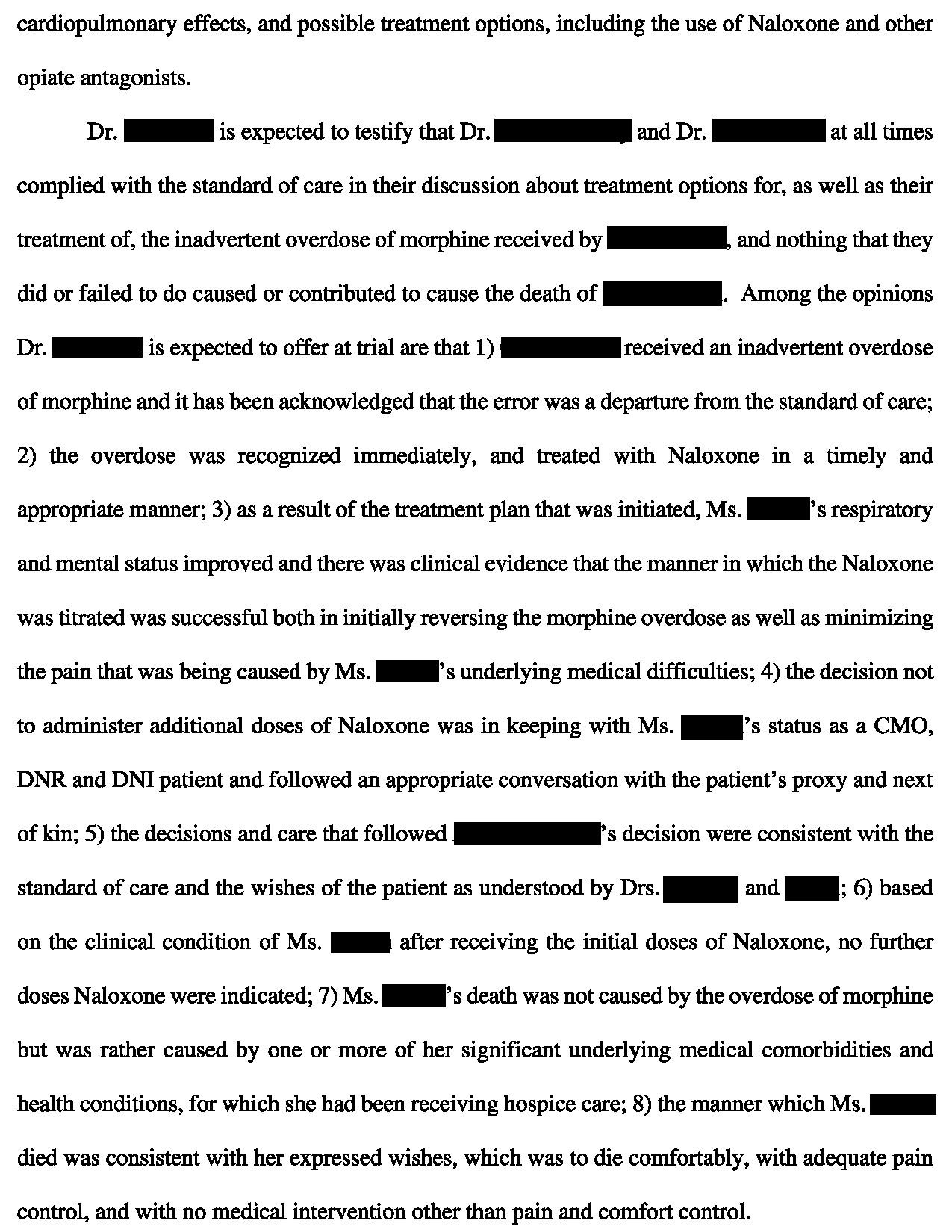
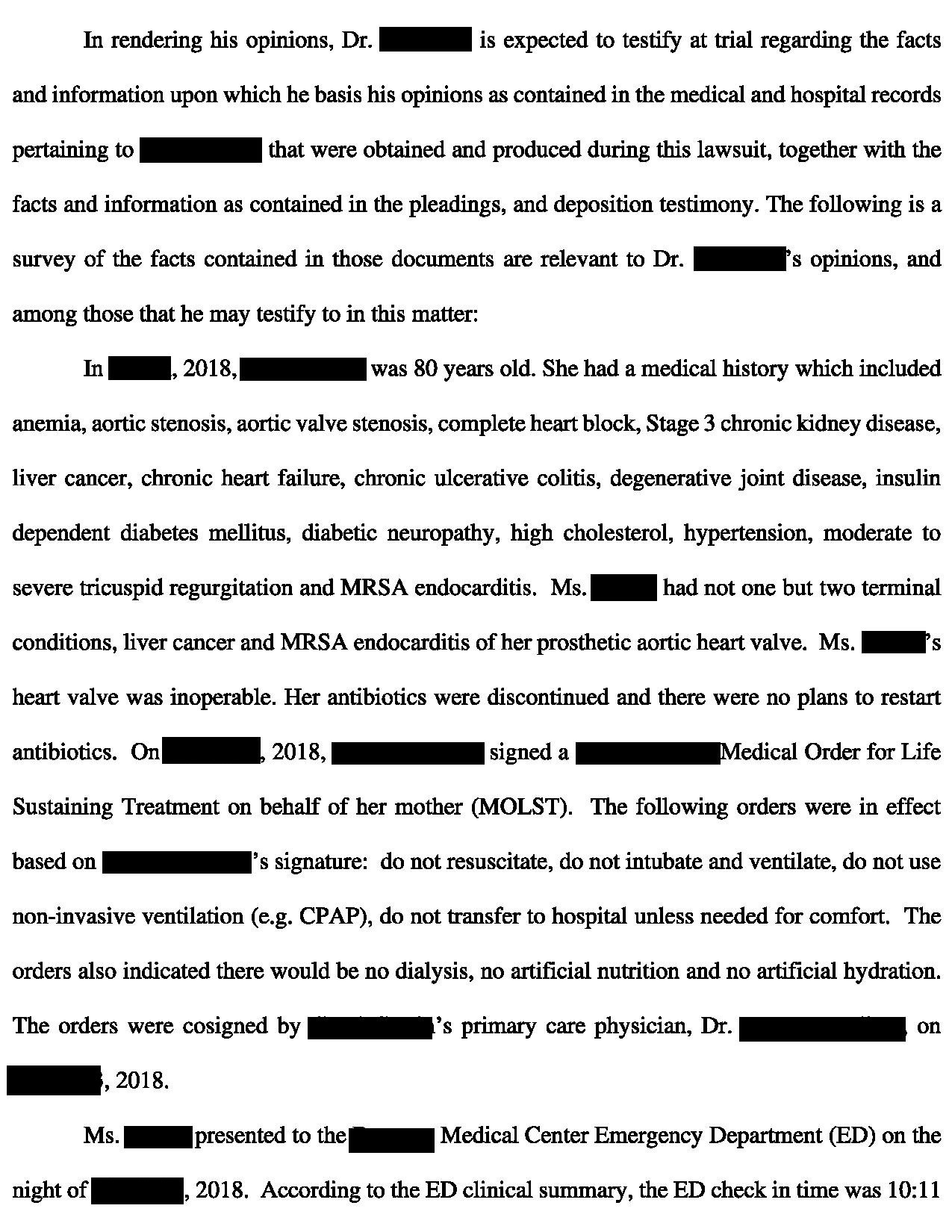
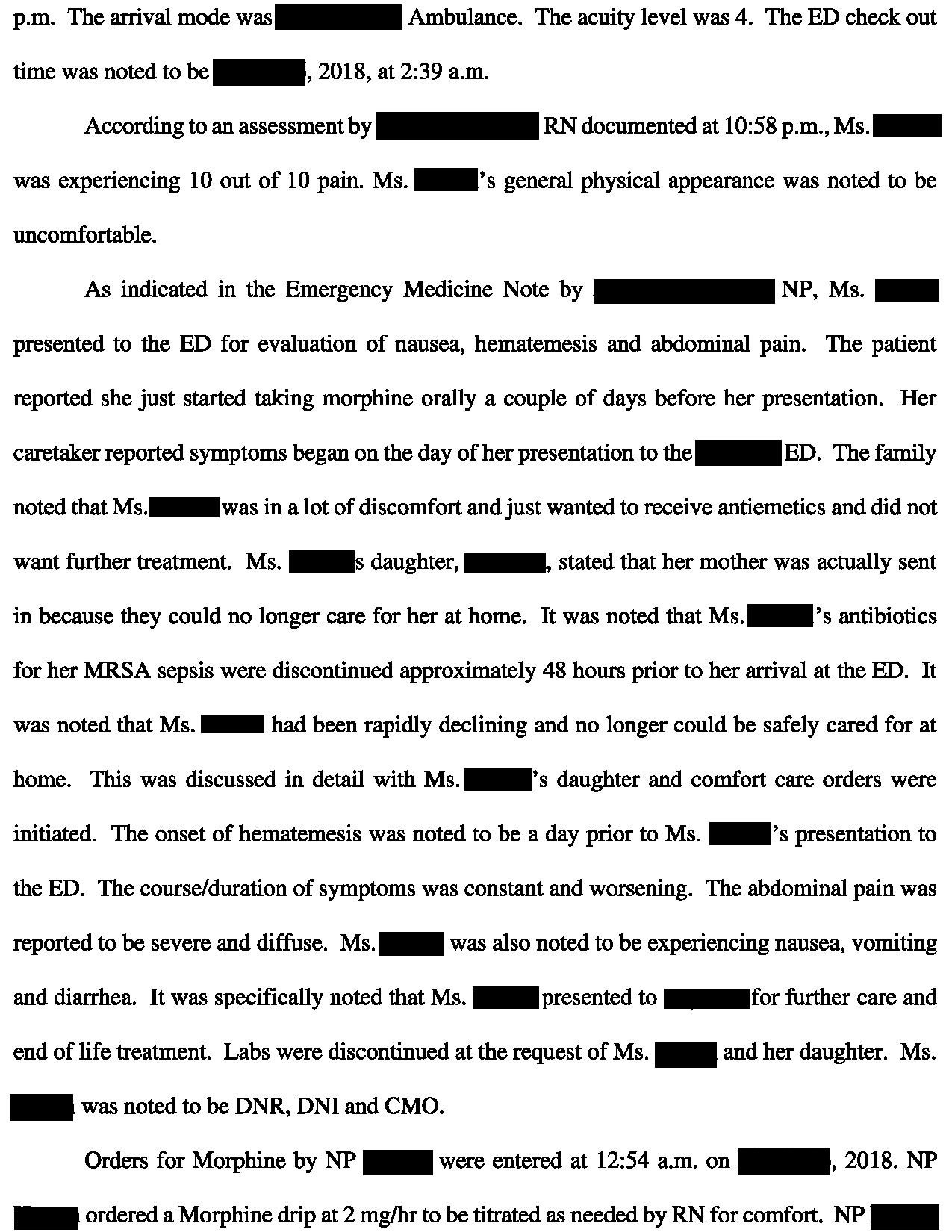

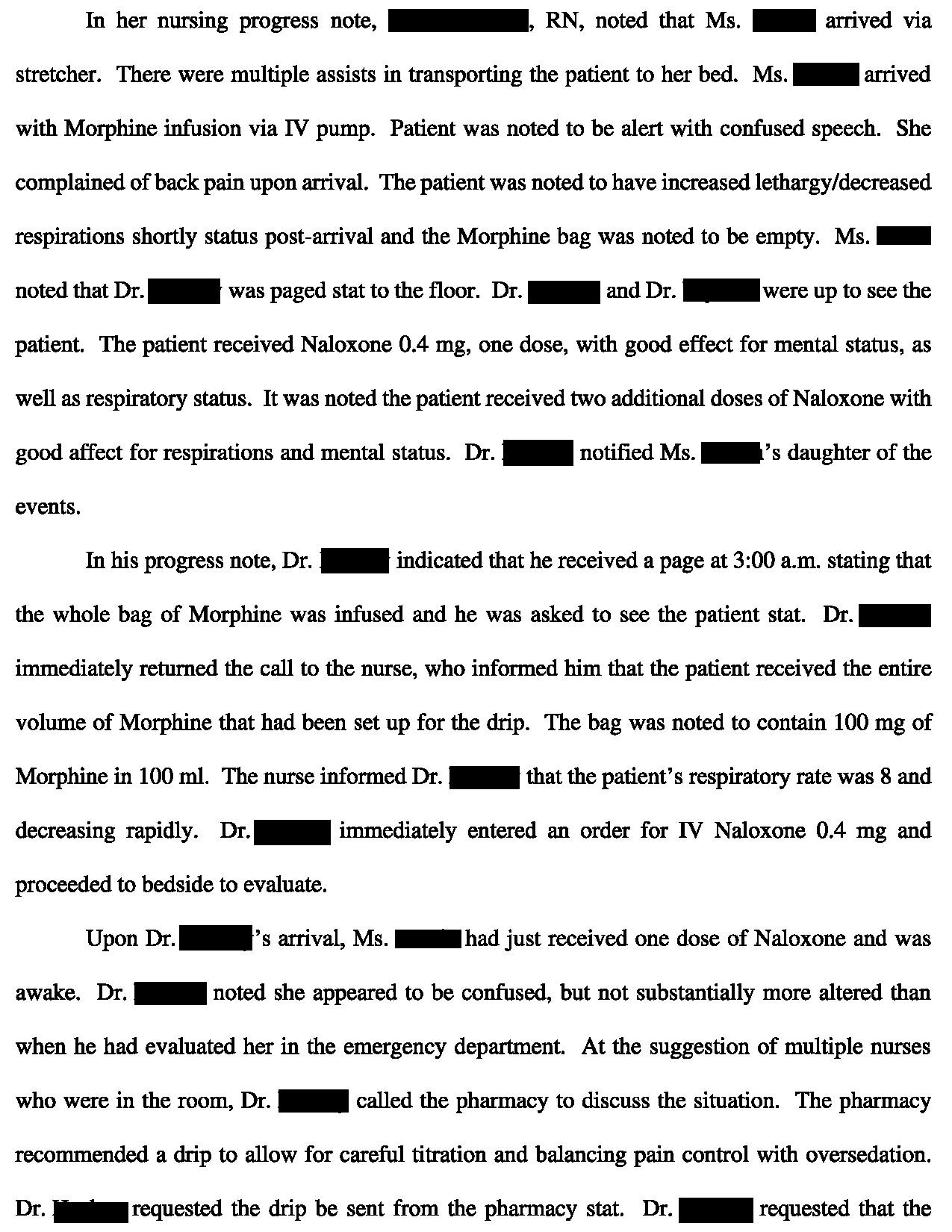

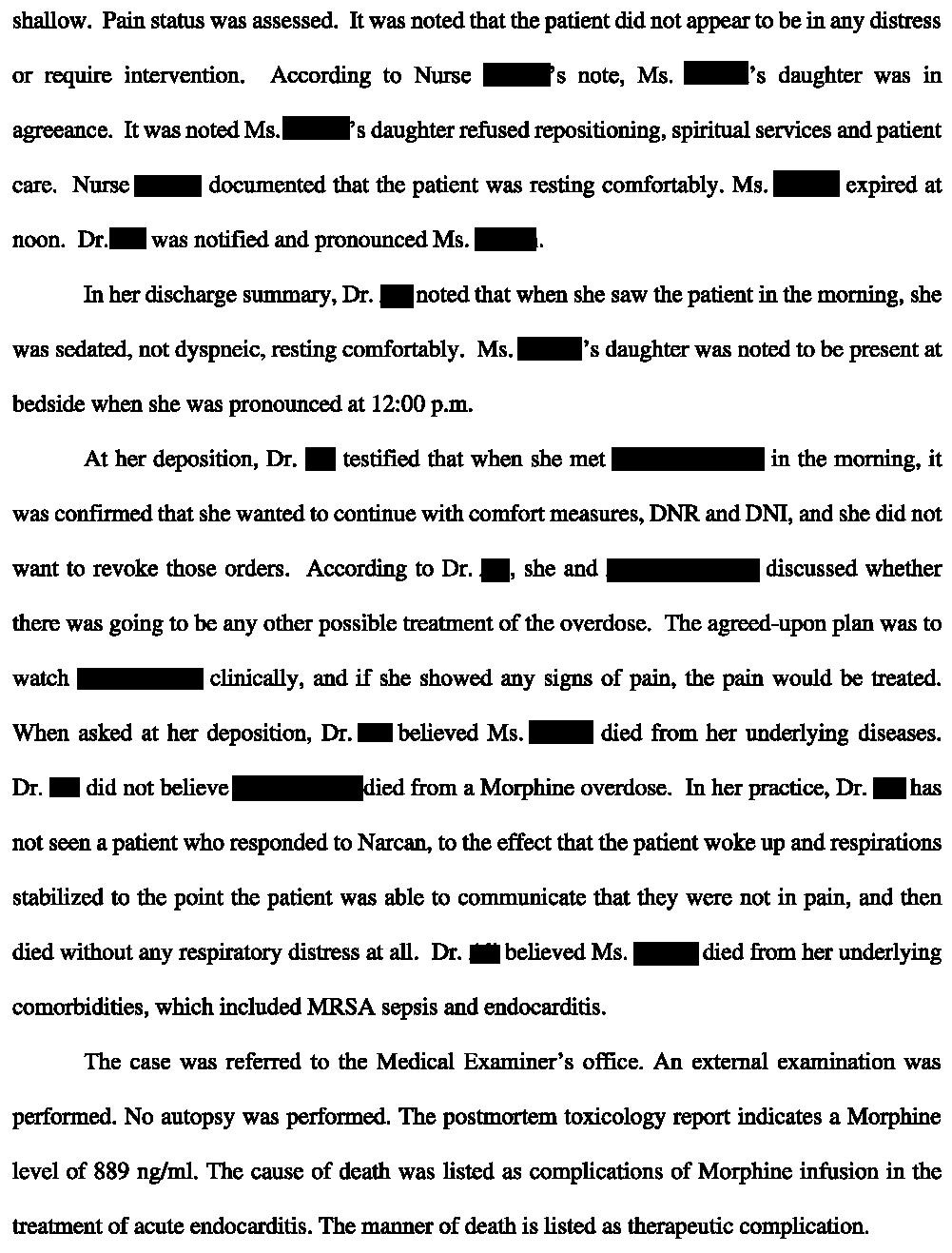

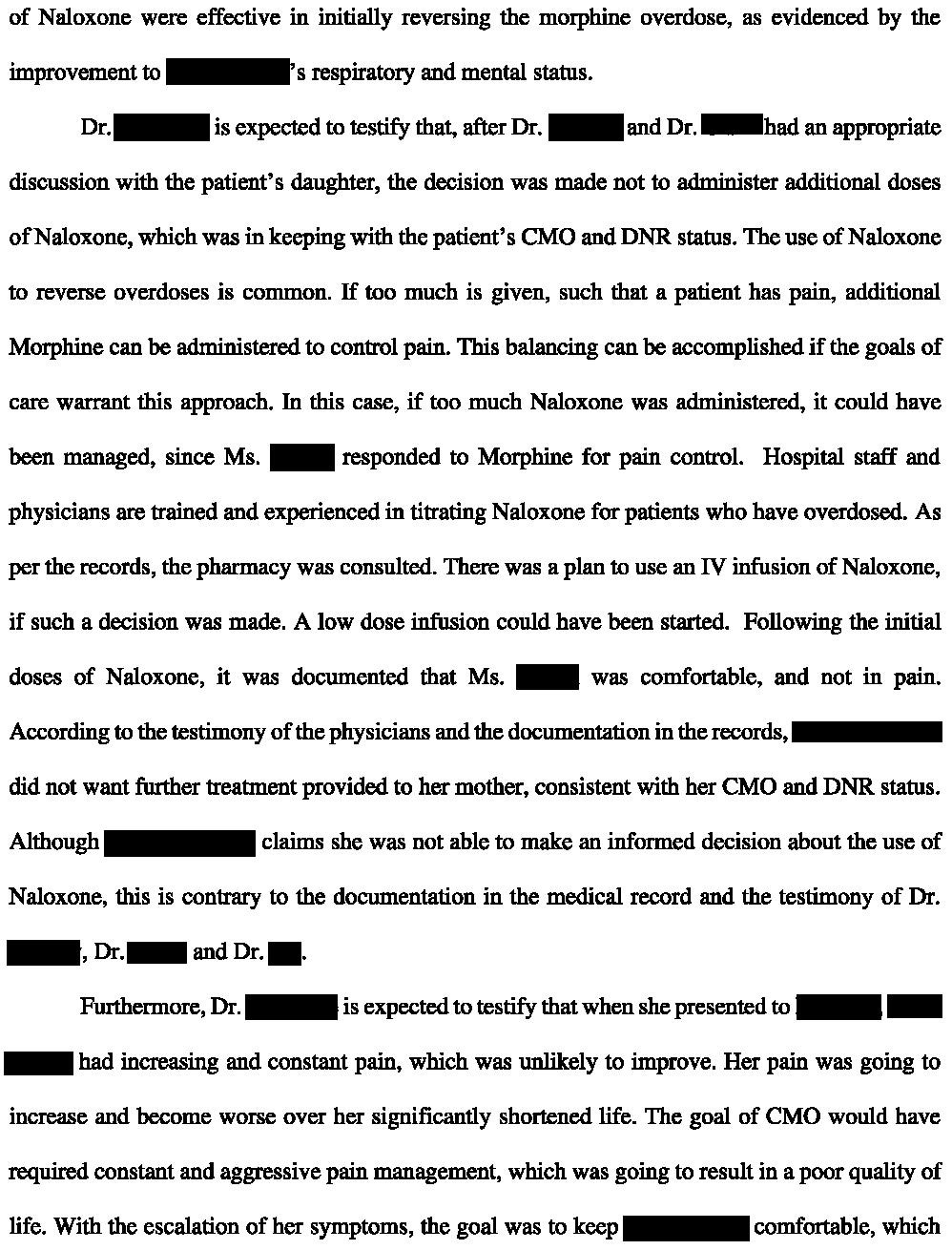
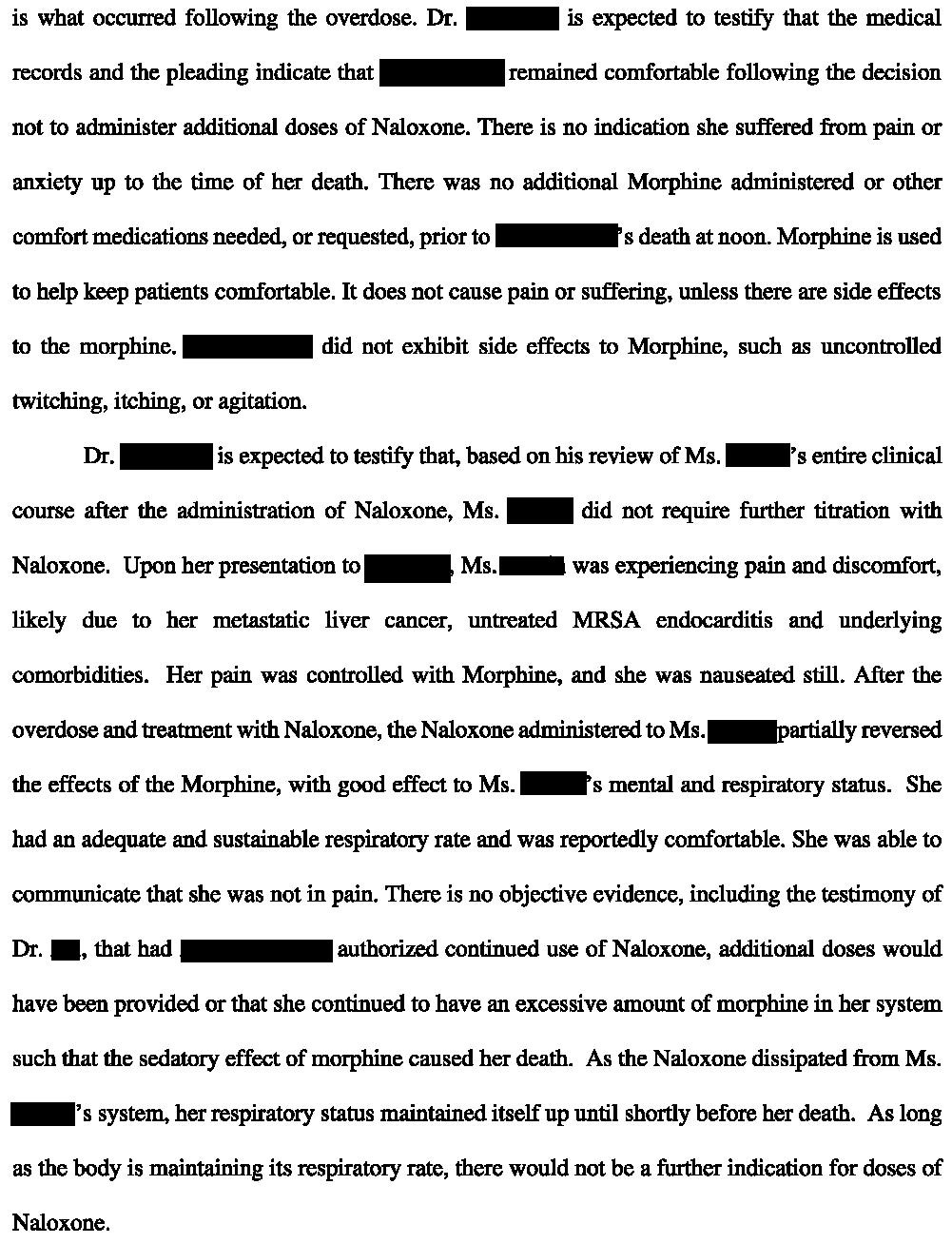
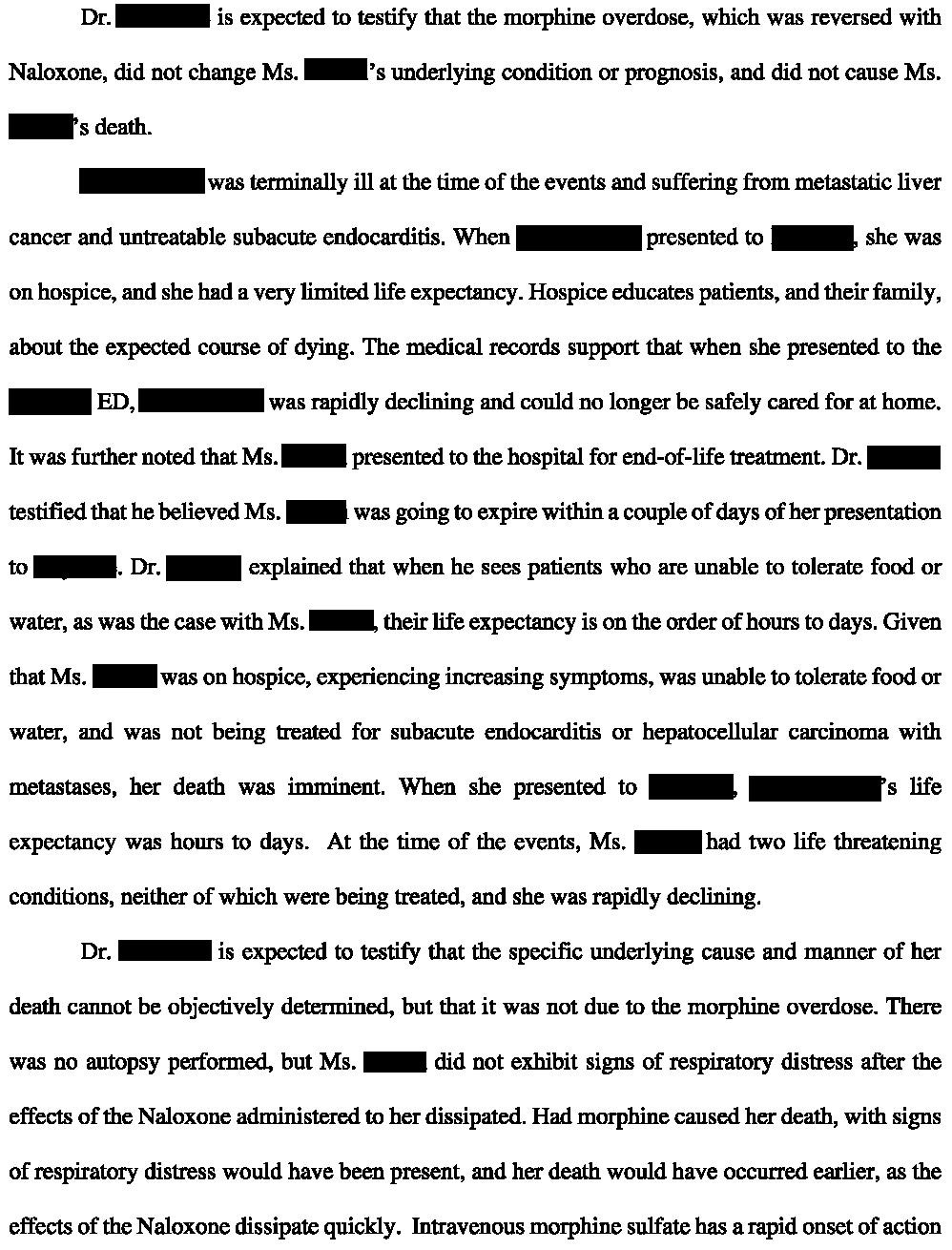
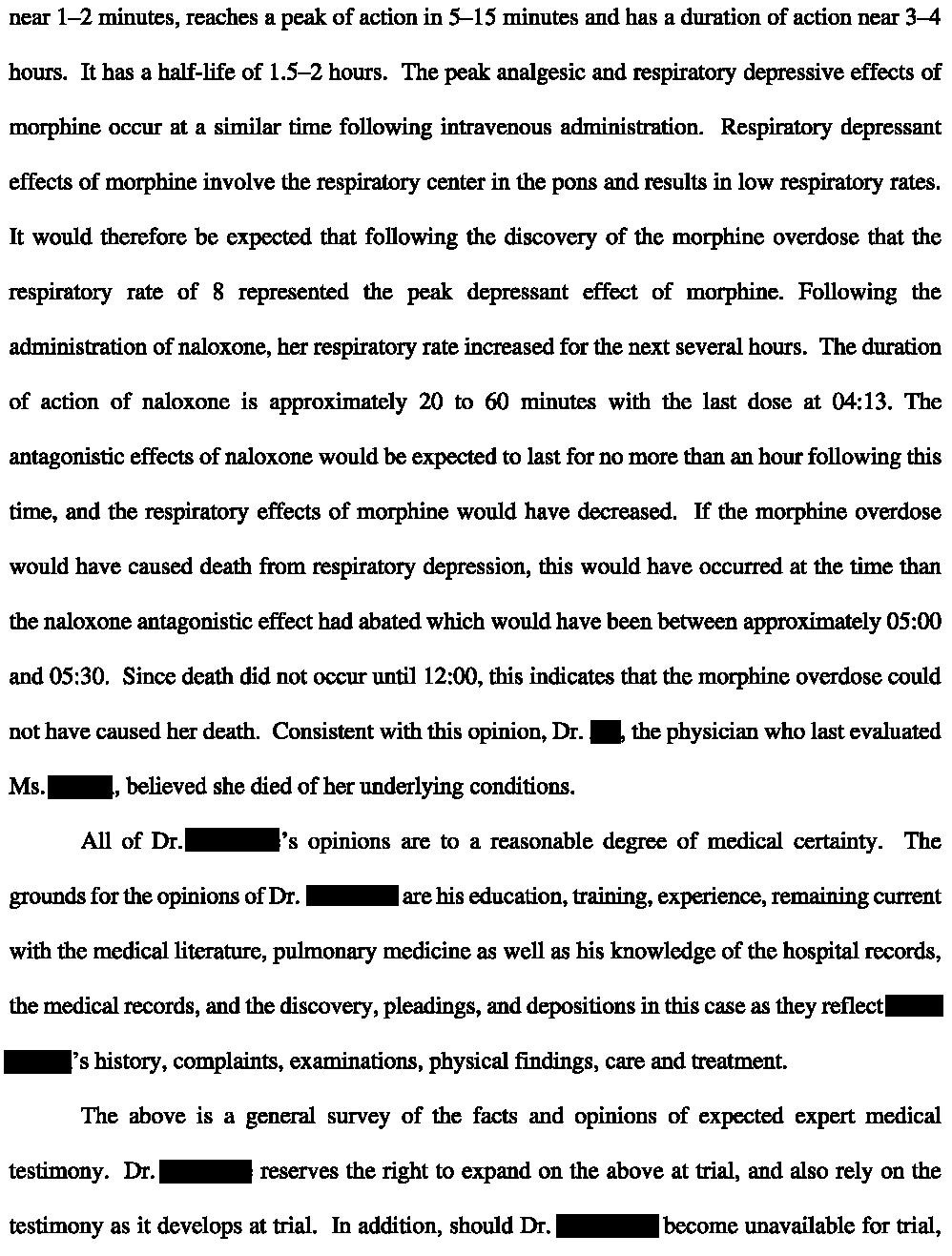


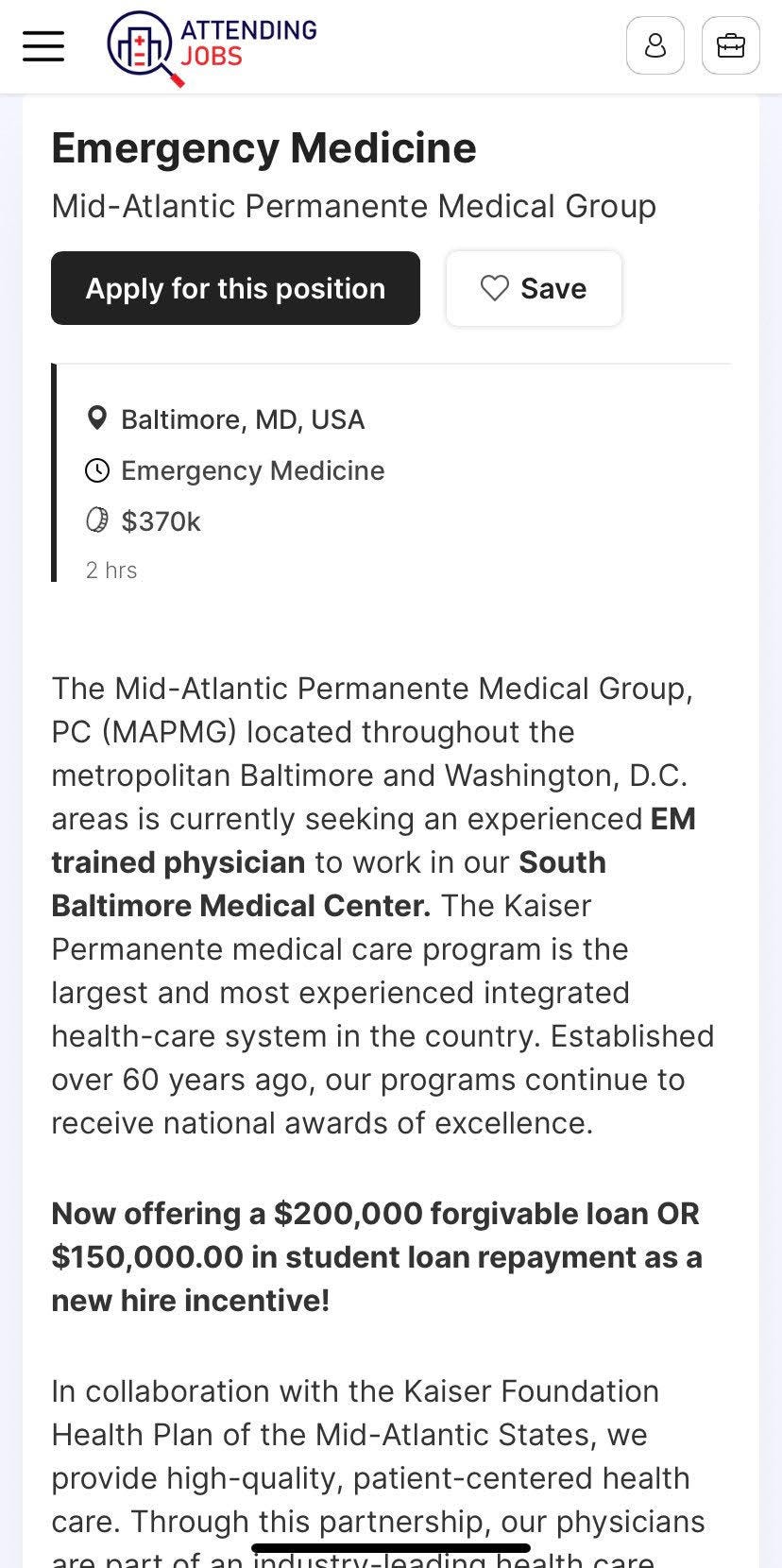
In response to MedMalReviewer Analysis point 3:
In this particular case (a dying person receiving a large dose of morphine) I do not think that we can assume that the usual pharmacokinetics of morphine and naloxone will be maintained. Although it is true that the usual half life of morphine is 1.5-2 hours the assumption that this patient's morphine level was trivial at the time of death based on pharmacokinetics (as laid out in the defence and point 3) is flawed. In fact the patient's post mortem morphine level was 889ng/ml, which is an exceptionally high level. Perhaps her serum naloxone level also remained high resulting in her stable state for many hours, we are not provided any evidence on this.
Why did the patient not metabolize morphine normally? There are 3 likely reasons: 1) Morphine metabolism takes place primarily in the liver and this end of life liver cancer patient likely had baseline impaired liver function, 2) This patient had active critical illness (MRSA Endocarditis/sepsis) that would further impair liver metabolic function, 3) The very high initial dose of morphine may have overwhelmed the metabolic capacity of the patient.
In this scenario the patient is not metabolizing morphine as we would usually predict specifically because she was actively dying. Her very high post mortem morphine level is evidence of the severity of her underlying illness.
While I do not think that there is any harm in this case, and the legal claim was baseless (looks like good physician communication around a gentle death) I think that there is a valid learning point that morphine metabolism is deranged in these types of very fragile patients. This can be helpful to us in practice as morphine effects and side effects can be very prolonged versus in patients with normal pharmacokinetics and we can account for that as we try to manage symptoms in end of life patients.
I just don’t understand. More and more of these cases are appearing that have [grossly] inappropriate testimony by “expert” plaintiff witnesses that seem to spout falsehoods just to claim a paycheck. I don’t see any sort of reality where this doesn’t get worse until we actual do something as a medical community against what is quite easily bought testimony. Are we really just giving up and letting this go unchecked? The statements given as medical fact on morphine’s effect on distress are just made up lies and the hoops the subsequent statements jump through as the assumed course with liquid pooling because of immobility simply enter the realm of make believe